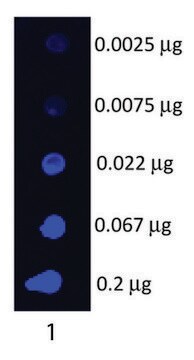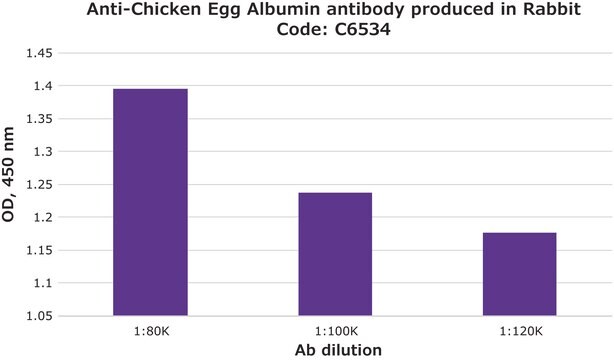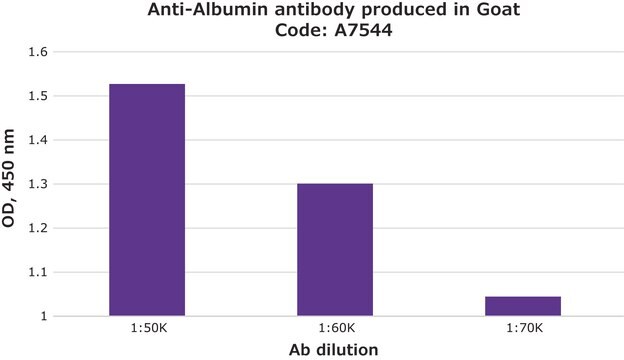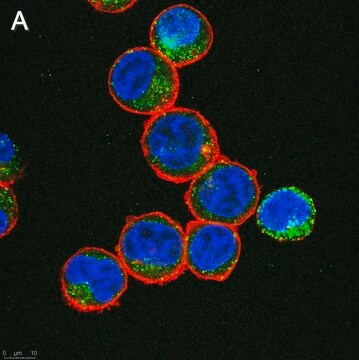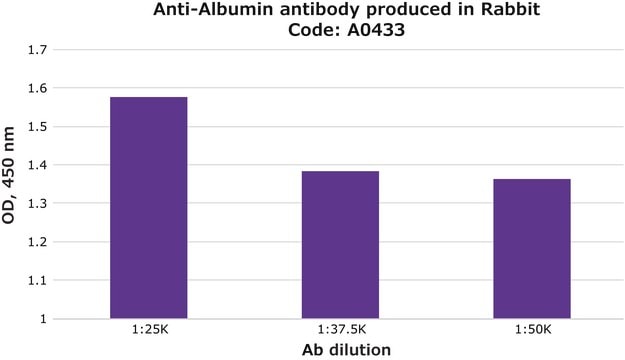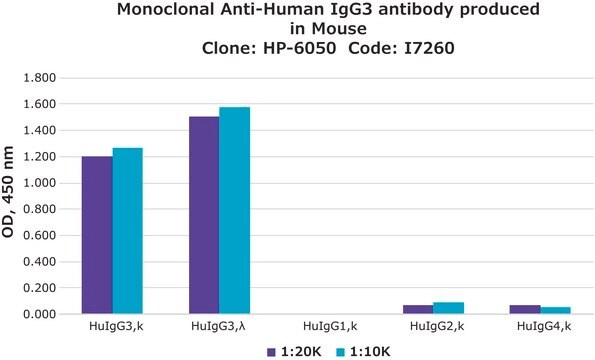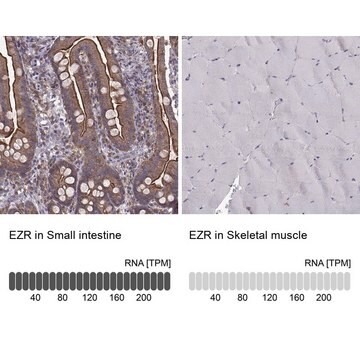SAB4200867
Anti-PMEL antibody produced in rabbit
affinity isolated antibody, buffered aqueous solution
別名:
ME20-M (ME20M) Melanoma-associated ME20 antigen, Melanocyte protein, Melanocyte protein Pmel 17, Melanocytes lineage-specific antigen GP100, Melanoma gp100, P1, P100, Premelanosome protein, Silver locus protein homolog
ログイン組織・契約価格を表示する
すべての画像(3)
About This Item
UNSPSCコード:
12352203
NACRES:
NA.43
化学種の反応性:
human
application:
テクニック:
immunoblotting: 1:1000-1:2000 using human melanoma SK-MEL-28 cell lysate
citations:
6
おすすめの製品
詳細
The melanocyte-specific protein PMEL (also known as Pmel17, gp100, melanocyte protein, premelanosome protein or silver locus protein homolog (SILV)) is a type I transmembrane glycoprotein that is expressed primarily in pigment cells of the skin and eye. In melanosomes, the protein forms a fibrillar matrix on which the UV-shielding pigment melanin is deposited.1-2
特異性
Anti-PMEL antibody specifically recognizes human PMEL protein.
アプリケーション
The antibody may be used in various immunochemical techniques including Immunoblotting (~100 kDa), Immunohistochemistry and Immunofluorescence.
Detection of the PMEL band by Immunoblotting is specifically inhibited by the immunogen.
Detection of the PMEL band by Immunoblotting is specifically inhibited by the immunogen.
生物化学的/生理学的作用
PMEL fibrils are a major functional component of the melanosomal compartment as they optimize melanin polymerization, condensation and storage.1,3
PMEL fibrils have an amyloidogenic nature and share features with pathological amyloids.4 Mutations in PMEL are associated with pigmentation disorders and/or impairments in eye development in various species.1,5,6
PMEL is suggested an excellent model system to study mechanisms of intracellular amyloid formation.1
PMEL fibrils have an amyloidogenic nature and share features with pathological amyloids.4 Mutations in PMEL are associated with pigmentation disorders and/or impairments in eye development in various species.1,5,6
PMEL is suggested an excellent model system to study mechanisms of intracellular amyloid formation.1
物理的形状
Supplied as a solution in 0.01 M phosphate buffered saline pH 7.4, containing 15 mM sodium azide as a preservative.
保管および安定性
For continuous use, store at 2-8°C for up to one month. For extended storage, freeze in working aliquots. Repeated freezing and thawing is not recommended. If slight turbidity occurs upon prolonged storage, clarify the solution by centrifugation before use. Working dilution samples should be discarded if not used within 12 hours.
免責事項
Unless otherwise stated in our catalog our products are intended for research use only and are not to be used for any other purpose, which includes but is not limited to, unauthorized commercial uses, in vitro diagnostic uses, ex vivo or in vivo therapeutic uses or any type of consumption or application to humans or animals.
保管分類コード
12 - Non Combustible Liquids
WGK
WGK 1
引火点(°F)
Not applicable
引火点(℃)
Not applicable
適用法令
試験研究用途を考慮した関連法令を主に挙げております。化学物質以外については、一部の情報のみ提供しています。 製品を安全かつ合法的に使用することは、使用者の義務です。最新情報により修正される場合があります。WEBの反映には時間を要することがあるため、適宜SDSをご参照ください。
Jan Code
SAB4200867-100UL:
SAB4200867-BULK:
SAB4200867-VAR:
SAB4200867-25UL:
最新バージョンのいずれかを選択してください:
Christin Bissig et al.
International journal of molecular sciences, 17(9) (2016-09-03)
In pigment cells, melanin synthesis takes place in specialized organelles, called melanosomes. The biogenesis and maturation of melanosomes is initiated by an unpigmented step that takes place prior to the initiation of melanin synthesis and leads to the formation of
Thomas Burgoyne et al.
Journal of cell science, 128(7), 1400-1407 (2015-02-19)
Analysis of melanosome biogenesis in the retinal pigment epithelium (RPE) is challenging because it occurs predominantly in a short embryonic time window. Here, we show that the zebrafish provides an ideal model system for studying this process because in the
Douglas M Fowler et al.
PLoS biology, 4(1), e6-e6 (2005-11-23)
Amyloid is a generally insoluble, fibrous cross-beta sheet protein aggregate. The process of amyloidogenesis is associated with a variety of neurodegenerative diseases including Alzheimer, Parkinson, and Huntington disease. We report the discovery of an unprecedented functional mammalian amyloid structure generated
Jia Shee Hee et al.
Scientific reports, 7, 44064-44064 (2017-03-09)
PMEL is a pigment cell protein that forms physiological amyloid in melanosomes. Many amyloids and/or their oligomeric precursors are toxic, causing or contributing to severe, incurable diseases including Alzheimer's and prion diseases. Striking similarities in intracellular formation pathways between PMEL
ライフサイエンス、有機合成、材料科学、クロマトグラフィー、分析など、あらゆる分野の研究に経験のあるメンバーがおります。.
製品に関するお問い合わせはこちら(テクニカルサービス)